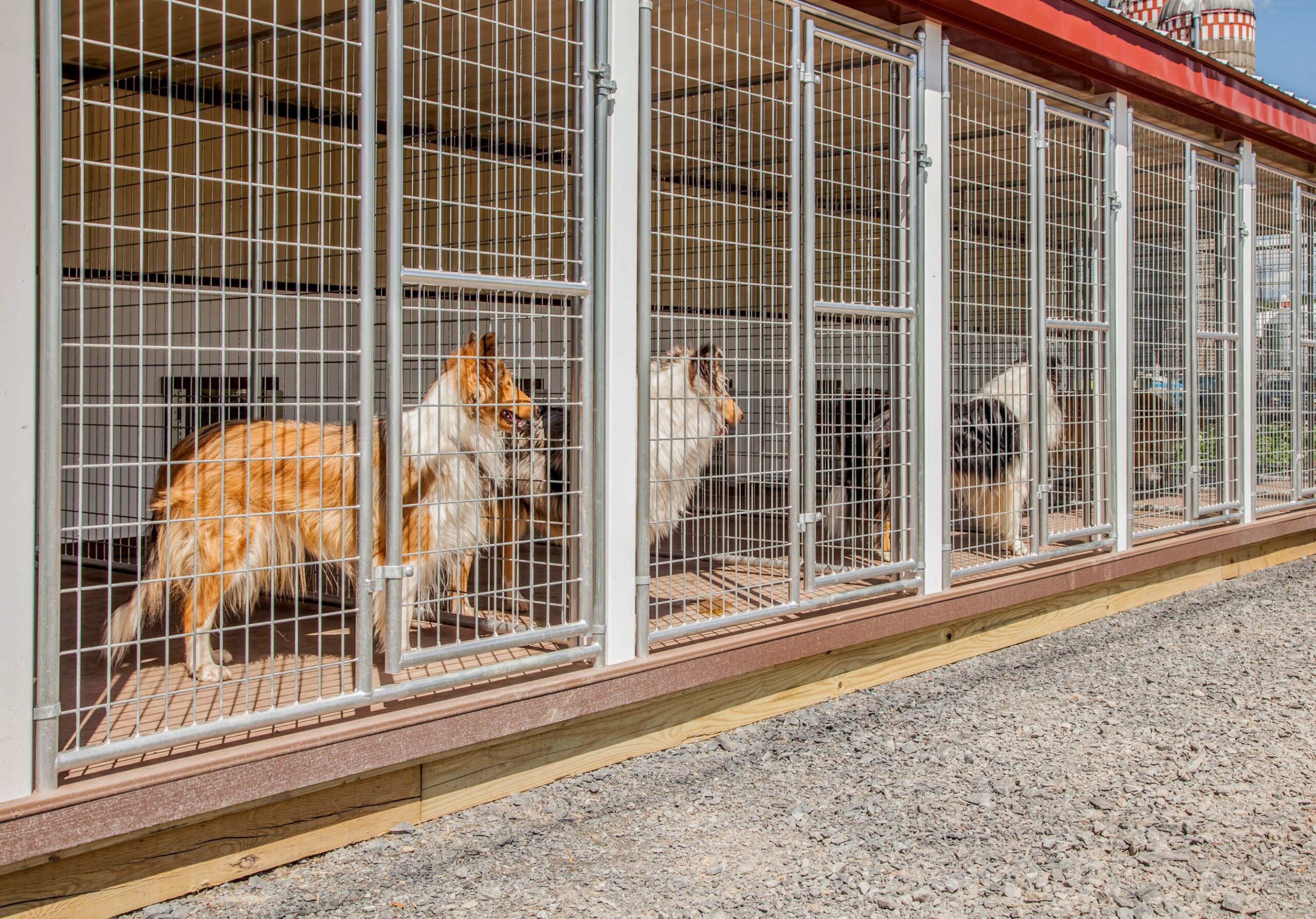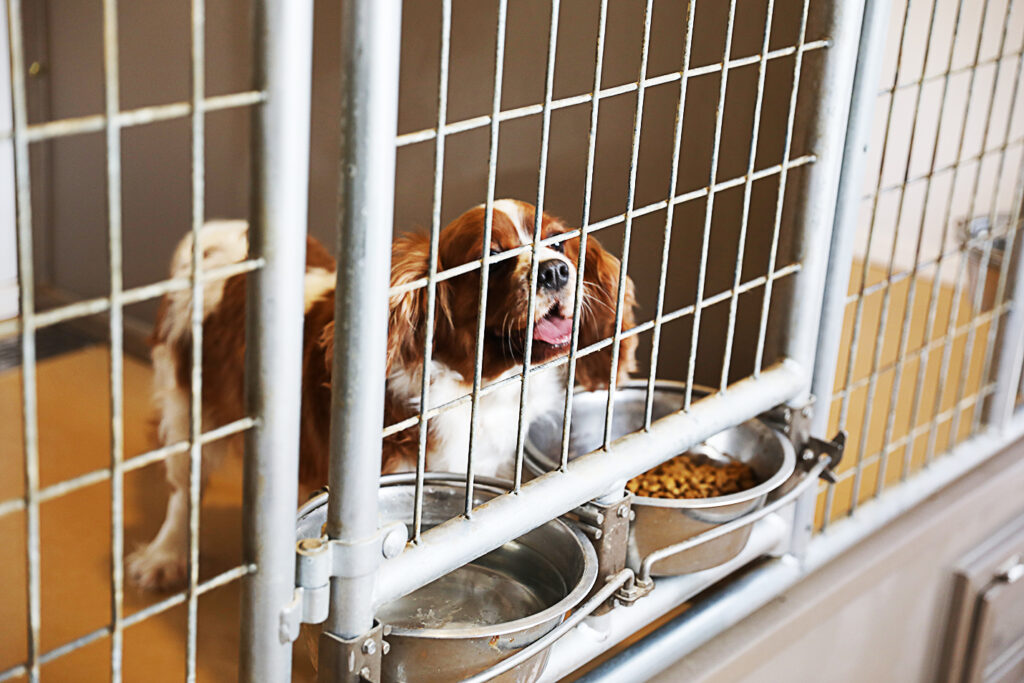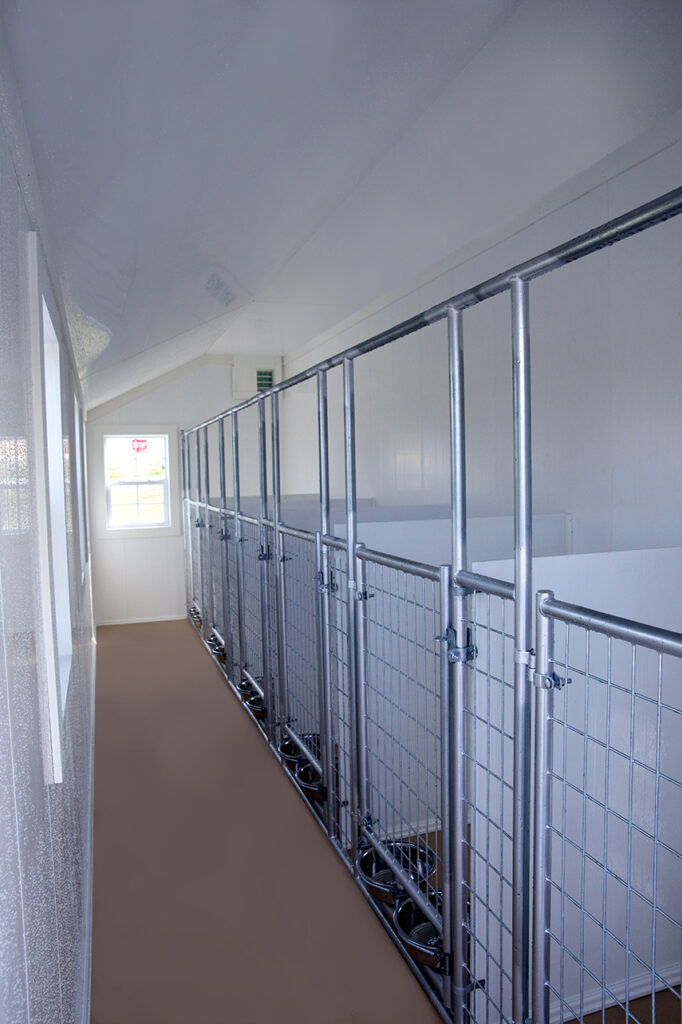
What’s the Function of a Municipal Dog Shelter?
Animal shelters play an important role in communities because they keep people safe, reunite lost pets with their owners, and rehome abandoned pets. There are broadly two types of shelters, rescue shelters and municipal shelters. Rescue shelters are typically non-profit organizations that rely on donations and volunteers. Municipal shelters, a.k.a. city shelters, are different because they are an arm of the local government, relying on public funding to keep citizens safe. Detailed below is how municipal shelters function.

What is a Municipal Animal Shelter?
As mentioned above, municipal shelters are a part of Animal Control, a branch of your local government. They use public funding (taxes) to hire animal control officers or dog catchers, catch stray animals, and house them in a commercial kennel. Trailside Structures has built many custom commercial kennels for municipal shelters all across the U.S. over the last decade of operation. These commercial kennels are built with quality, durable materials to house potentially dangerous animals and withstand high turnover. Dangerous animals are humanely euthanized and friendly animals are either kept on-premise to be rehomed or sent to rescue shelters that partner with municipal shelters.
The Function of a Municipal Shelter
Municipal dog or animal shelters serve multiple functions in their communities. A high emphasis is placed on rabies control, capturing dangerous animals, and euthanizing them to prevent the spread of rabies to other animals or attacks against humans. There is also a large emphasis on population control. Stray cats and dogs caught by your municipal animal control will usually be spayed or neutered so that they don’t produce more stray animals. They’ll spend a couple of days to heal in the municipal kennel after being fixed and are then put up for adoption or released if they wouldn’t make good pets.

Municipal shelters also serve the function of reuniting lost pets with their owners. Neighbors who come across a domesticated animal can catch the pets on their own and turn them into the city shelter. If you ever lose a pet, contact your local animal control and they’ll notify you when they receive an animal matching your pet’s description. On a related note, if a pet owner is moving and unable to take the pet with them, they can drop them off at a municipal shelter to be rehomed. The shelter might charge a rehoming fee for owners surrendering their pets but never for catching strays, as it’s funded by tax dollars for that purpose.
How Animal Control Officers Catch Strays
There are a couple of humane ways an animal control officer will catch stray dogs and cats before bringing them to the municipal shelter. They can set up metal cage traps with bait to lure the stray into the trap. These traps come in a variety of sizes for any animal but do have the downside of needing to wait for the stray to trigger the trap.
Animal Control Officers could use a more active tactic to capture the stray animals. One is a dog catch pole. These devices are long poles with a loop on one end. Dog catchers will approach the dog carefully, place the loop around its head, and tighten the loop, essentially creating a collar and leash around the dog’s neck. One final device dog catchers might use is called a butterfly net. These devices are strong nylon nets attached to the end of a pole (similar to the catch pole) which are thrown over dogs and twisted shut. Butterfly nets are the safest way to trap aggressive animals, as they’re quick and have the least risk of hurting the animal.
Once the Animal Control Officer catches a stray, he/she will load them into their vehicle outfitted with cages to keep them safe. Then, they are taken to the municipal shelter, neutered, vaccinated, and released unless they have an adoption program or the animal poses a threat to humans.